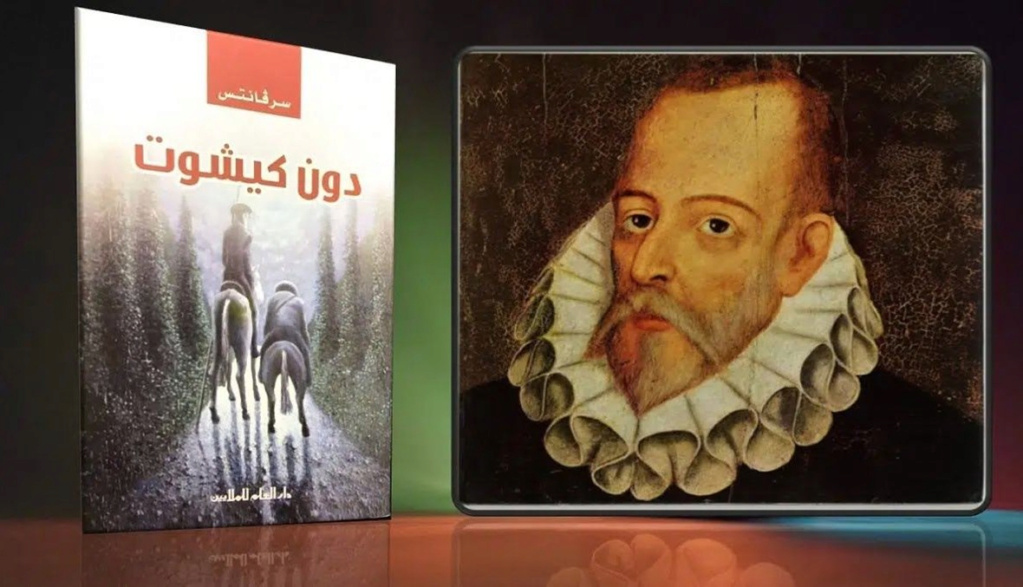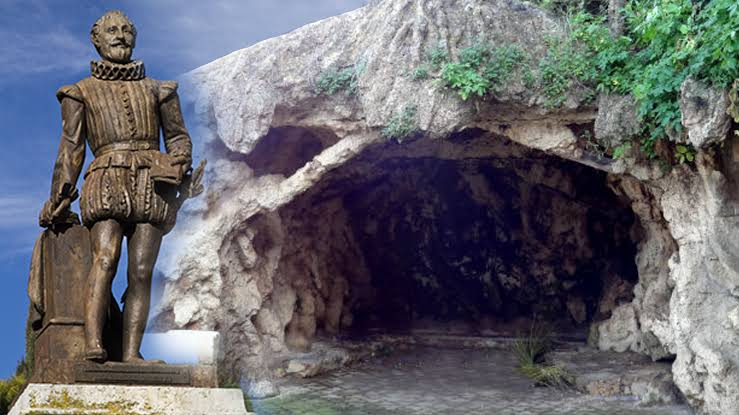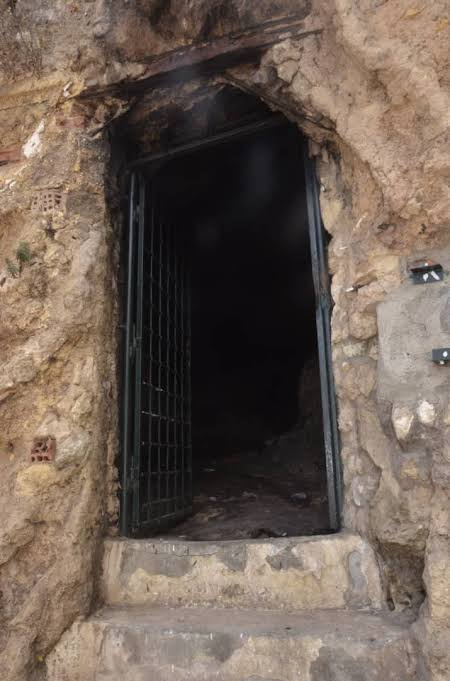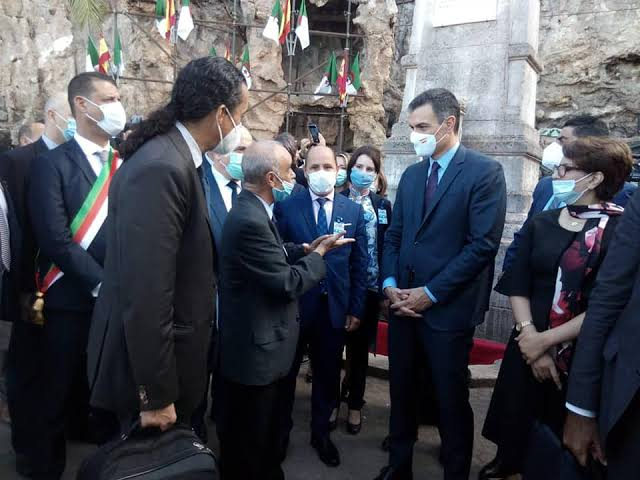Cervantes immortalized in his Algerian cave... the ordeal of hiding that inspired him "Don Quixote"

On a distinctive mountain elevation in Algiers, crossed by a single road with sharp turns, a cave sits in the middle of the forest. It turned into a literary and intellectual symbol after it embraced the famous Spanish poet Miguel Cervantes, and from it his most important literary masterpieces came out.
The place seems strange to you, and makes you realize that whoever passed through here and stayed in this place for five years was not an ordinary person. And in the depths of this mountainous forest, adjacent to one of the most important gardens in the world, one of the most important works of international cinema came out... the movie "Tarzan".

The place "the cave" was closely linked to world literature, and between cinema and literature a fine thread represented the achievement of immortal masterpieces, so it was the masterpiece "Don Quixote" by the Spanish writer Miguel Cervantes, the author of the aforementioned novel, and the inhabitant of the cave between 1575 and 1580, where he took refuge there after escaping from the captivity of the Ottomans in Algeria.
Few Algerians know the story of this cave, which is adjacent to the Algerian National Library and the National Museum of Fine Arts, which opened in 1897.
An-Nahar al-Arabi toured the cave. As for Mounir, he says, "All I know is that it is a historical cave and only...", to be interrupted by Amin, "Oh, brother Jami, I heard about it...".
This is the case of the symbolic cave, for a generation or even generations of Algerians, and it is not surprising as long as it remained for many years in complete neglect, although it is a literary and cultural heritage landmark whose fame exceeded the borders of Algeria to reach all parts of the world through Cervantes' novel "Don Quixote de La Macha". Or "Don Quixote" in Spanish.
From a soldier to a global novelist and writer
In an interesting storytelling style, journalist and researcher Muhammad Bin Zayan told An-Nahar Al-Arabi the story of Miguel Cervantes. On his way back from Italy to Spain after obtaining a military leave, the ship carrying Cervantes near Marseille was ambushed by Ottoman sailors, and he and his brother Rodrigo were captured in 1575. Ben Zayan added: "Cervantes participated in the Battle of Lepante (1571), and his attempts to escape from captivity were numerous, only to succeed in the end and to hide in the cave before he was discovered and released on September 19, 1580." Ben Zayan confirms that the ordeal transformed Cervantes from a soldier into a novelist, playwright and poet, and his time in Algeria left an imprint on his texts.

emission attempts
For nearly twenty years, the Algerian authorities, in cooperation with the Spanish embassy, have tried to restore the place and make it part of the tourist heritage trails in the country's capital. Before that, the interests of the municipality of Mohamed Belouizdad began cleaning the cave and fencing it to remain a landmark that is not subject to the entry and exit of vagabonds, drug users and others, in an attempt with which many expected that the symbolic cave would be resurrected, and that it would be "a cultural, heritage and tourist symbol and an Algerian literary and novelist," but the cave did not She enjoys the attention that was intended for her, especially from the elite intellectuals and writers in Algeria.
In this regard, Ben Zayan confirms to "Al-Nahar Al-Arabi" that "a number of intellectuals have called for cultural and touristic investment in the cave and other similar sites, such as the cave in which Ibn Khaldun wrote his introduction in the areas of Feranda in the Tiaret Governorate (western Algeria) ... and hope It still exists for the movement of businessmen and businessmen, such as the initiative of one of them in Oran when he prepared and transformed the house of Yves Saint Laurent into a tourist and cultural landmark.
Intellectuals had previously put forward many proposals to make Cervantes' Cave a cultural space, and the writer Abdel Razzaq Boukba called, years ago, to enable the cave to embrace the idea of a cultural café that brings together elite intellectuals, writers and writers from all walks of life, and make it a place for meeting and exchanging books, artistic performances, interventions, etc., other than The idea has remained just a proposal that cannot be embodied, even morally, until now, and Cervantes' cave is still "neglected and marginalized in the cultural scene," according to Boukba.
intellectual and political interest
Intellectually, Algerian researchers and writers paid attention to the period that Miguel Cervantes lived in Algeria, among them the novelist Wassini Al-Araj, who wrote his novel "The Guardian of Shadows" inspired by the story of Cervantes' hiding in the cave; The writer Jamal Ghallab also had a prayer about the cave when he wrote in 2006 "Cervantes in Hama", considering that the world writer is still alive on the literary level, and he immortalized Algeria in his masterpiece "Don Quixote", which has known more than 800 editions and has been translated into most languages of the world. .

As for the rest of the Algerian intellectuals, they have been calling for the cave to be given the status it deserves, and for it to receive the actual attention of the Ministry of Culture and the authorities in general, especially since Algeria is living a new era at all levels, stressing that the panoramic cave scene will add to the region's splendor and an elegant aesthetic symphony.
Politically, and before the tension between the two countries, Algeria and Spain, the head of the Madrid government, Pedro Sanchez, had visited Algeria in the fall of 2020, and the end of his visit was Cervantes' cave, where he affirmed at the time that "artists, creators and writers belong to the land in which they grew up," adding that part of The writer's life is linked to Algeria. As he explained in a media statement, Spain and Algeria "have been working for many years to embody a book dealing with the life of the Spanish writer and the path he took, and we are also working on realizing the Cervantes Trail, which is an Algerian-Spanish project on the tourist path in coordination with the Governorate of Algiers and the Cervantes Institute, which" embodies a mixture of cultures of the two countries," he said.

Some political parties and Spanish businessmen and businessmen in particular, who are deeply affected by the suspension of the friendship treaty that binds the two countries and the cessation of trade between them, are trying to play on the chord of culture and heritage close to the spirit of the two peoples, to ease the tension that entered its second year a few days ago, despite the strictness shown by the Algerian authorities in this regard.
Source : websites

